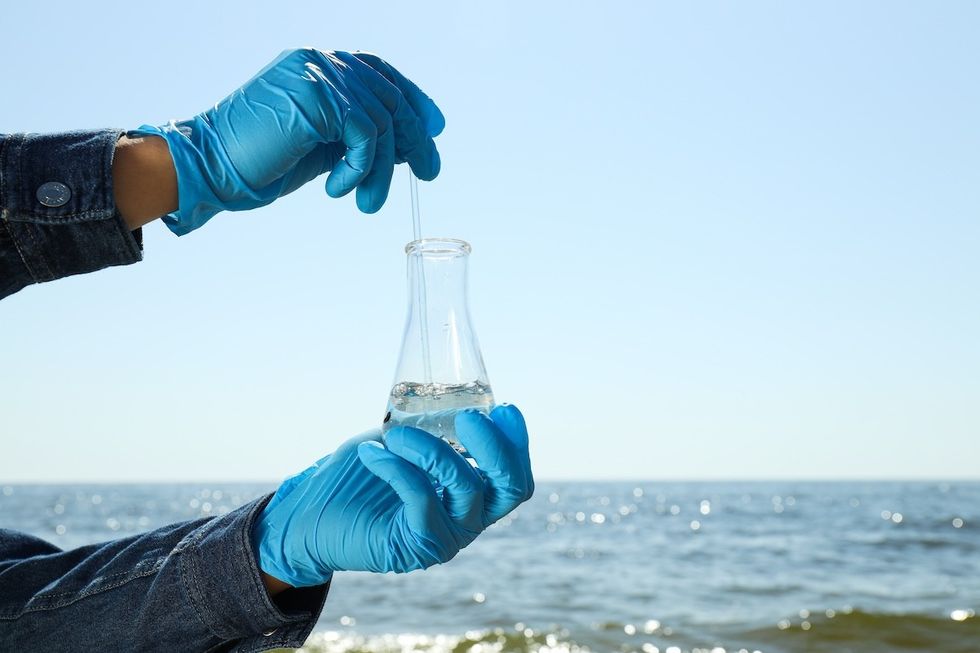American shorelines along the East and West Coasts aren’t exactly in prime condition to welcome surfers and swimmers this summer. A new clean water report from the Surfrider Foundation warns that more than 100 million beachgoers will be flocking to “bacteria hotspots” this summer after a concerning number of beaches tested positive for harmful substances. Keep reading to learn where you shouldn’t host your annual sandcastle competition this year.
RELATED: The 9 Most Dangerous U.S. Beaches for Shark Attacks, Ranked.
The Surfrider Foundation prides itself on testing beach waters and other polluted areas—like stormwater outlets, rivers, and creeks that flow into nearby beach communities— that aren’t covered by government and environmental agencies. They do this through efforts by the organization’s Blue Water Task Force (BWTF) and Ocean Friendly Gardens (OFG) programs.
In 2024, BWTF labs processed 10,120 water samples from 604 distinct testing sites. The foundation’s clean water report highlights public beaches where task forces are “consistently measuring high bacteria levels that exceed state health standards for recreational water.”
Beaches along the East Coast and West Coast, as well as the coastlines of Puerto Rico, Hawaii, and Texas, yielded bacterial concentrations that are harmful to humans and wildlife. They concluded that 80 percent of beaches and sampling sites—equating to 483 locations—had “at least one high bacteria result that exceeded state health standards.”
“This shows the importance of regular water quality monitoring at the beach to protect public health and safe recreation,” says the organization. Furthermore, these results are extremely concerning given the time of year we’re entering.
According to their findings, here are the top 10 Beach Bacteria Hotspots in the U.S., alongside their bacteria level percentage:
- Kahalu’u in O’ahu, HI (92 percent)
- Waikomo Stream at Koloa Landing in Poipu, Kaua’i, HI (90 percent)
- Park View Kayak Launch in Miami Beach, FL (90 percent)
- Imperial Beach in San Diego, CA (82 percent)
- Linda Mar Beach in Pacifica, CA (71 percent)
- South Sound Thea Floss Floating Dock in Tacoma, WA (64 percent)
- Ballard Park in Melbourne, FL (52 percent)
- Windmill Beach in Sag Harbor, NY (43 percent)
- San Luis Creek Mouth in Avila Beach, CA (38 percent)
- Playa Crashboat in Aguadilla, PR (23 percent)
“These Beach Bacteria Hot Spots represent a variety of recreational waters and access points that are important to local communities, yet water quality conditions could be putting public health at risk,” explains the Surfrider Foundation.
RELATED: You Shouldn’t Travel to These 21 Countries Right Now, State Department Warns.
The clean water report isn’t new news for many of these beach towns, unfortunately.
Just this week, The New York Times dubbed San Diego’s Imperial Beach “one of the nation’s worst environmental disasters.” The area has been closed to the public for more than 1,200 consecutive days due to rising health concerns. As the Times reported, “Every day, 50 million gallons of untreated sewage, industrial chemicals and trash flow from Tijuana, Mexico, into southern San Diego County.”
In the article, city mayor Paloma Aguirre called Imperial Beach’s environmental crisis a “public health ticking time bomb.”
The Tijuana River, which flows into Southern California and the Pacific Ocean, has tested positive for “astronomically high levels of hydrogen sulfide in the air,” per the Times.
“I consider this to be the largest environmental justice issue in the whole country,” Paula Stigler Granados, a local public health researcher, told the newspaper. “I don’t know any other place where millions of gallons of raw sewage would be allowed to flow through a community.”
Content shared from bestlifeonline.com.

